|
|
Robotic Animal Behaviour |
|
Robotic animal combos show how engineers look to biology for inspiration
Robotic animals that fuse ideas from artificial intelligence, engineering and biotechnology are central to the work of the new artist in residence at the Intelligent Automated Systems laboratory (IAS Lab) at the University of the West of England, Bristol. Senior Lecturer Dr Dylan Evans has won a grant from the Leverhulme Trust to bring the digital artist, France Cadet (also known as ‘Cyber-doll’) to work at the IAS Lab.
During her residency, Ms Cadet will construct a multi-robot installation called ‘Dog(Lab)02’, a follow-up to a highly successful prize-winning installation entitled ‘Dog (Lab)01’ which attracted international acclaim. For Dog(Lab)01 Ms Cadet created a series of different robotic animals by hacking some popular cyber-toys. Each robotic animal was a chimera – a combination of several animals. For example, the ‘Dolly’ robot was half dog, 30% ewe, 15% cow, and 5% sheep. As the name suggests, Ms Cadet's robots raise questions about the opportunities and dangers presented by contemporary experiments in biotechnology such as cloning. In 1996, scientists announced that they had successfully cloned the first mammal, a sheep named Dolly. The real Dolly lived a normal life, but Ms Cadet's robotic version was programmed to manifest the symptoms of “mad cow disease” (BSE), which reminds us that scientific optimism about the potential benefits of biotechnology need to be tempered with caution about the potential dangers.
Ms Cadet said: “During my residency at UWE I am planning to make a whole pack of robotic cow-dogs that will appear to suffer from BSE in unison. By using a whole pack of robotic dogs, the aim is to create a much more frightening impression than was possible with the single dog of Dog(Lab)01, which often inspired amusement – something I did not intend.”
Dr Dylan Evans from the IAS Lab will be working closely with France . He said, “This project will be very exciting for all of us. We hope to exhibit Dog(Lab)02 in Bristol in 2006. Ms Cadet's work demonstrates how increasingly engineers in robotics are looking to nature and biotechnology to break new ground. For example, my colleagues here at the IAS Lab have built a robot that gets its energy by eating flies, and robots that fly in flocks like birds.”
For more information please see :
· for France Cadet http://www.cyber-doll.com · for Dog(Lab)01 http://doglab.free.fr/index.htm · for Dr Dylan Evans http://www.dylan.org.uk · for the Leverhulme Trust http://www.leverhulme.ac.uk |
|||
|
News Links;
http://www.dshed.net/studio/projects/doglab02/doglab02_about.html |
|||
|
|
|
|
|
|
|||
|
For Dog(Lab)02, Ms Cadet is planning to make a whole pack of robotic cow-dogs that will appear to suffer from BSE in unison. By using a whole pack of robotic dogs, the aim is to create a much more frightening impression than was possible with the single dog of Dog(Lab)01, which often inspired amusement – something she did not intend.
To follow the project as it progresses, read France Cadet's online diary, which is being hosted by The Watershed. |
|||

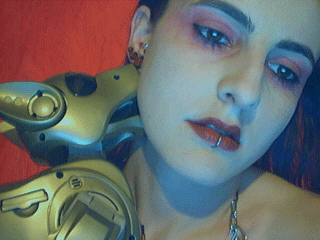
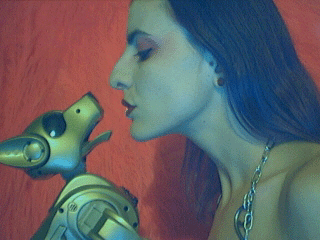
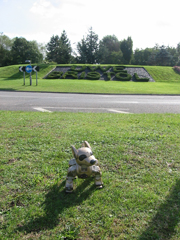
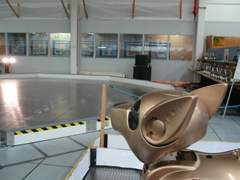
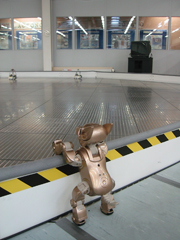
 I've
won a grant from the
I've
won a grant from the